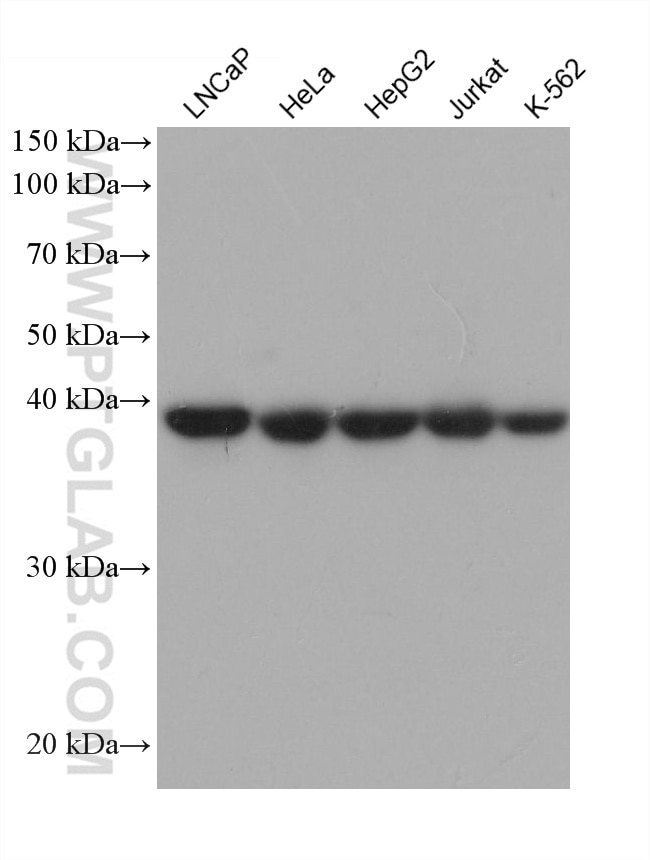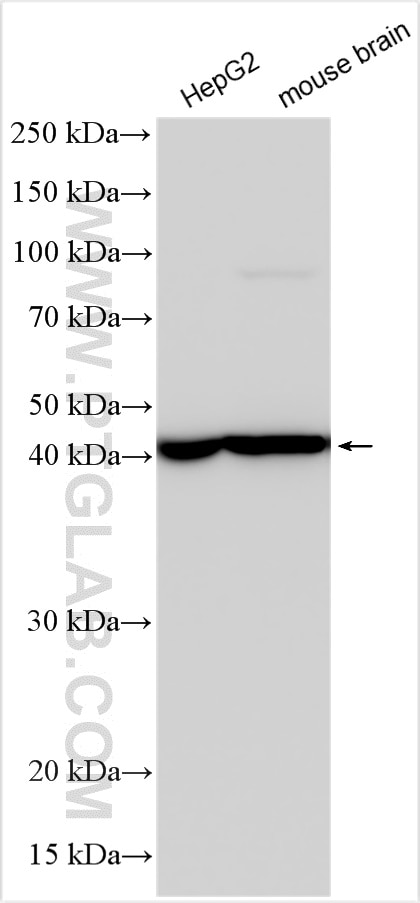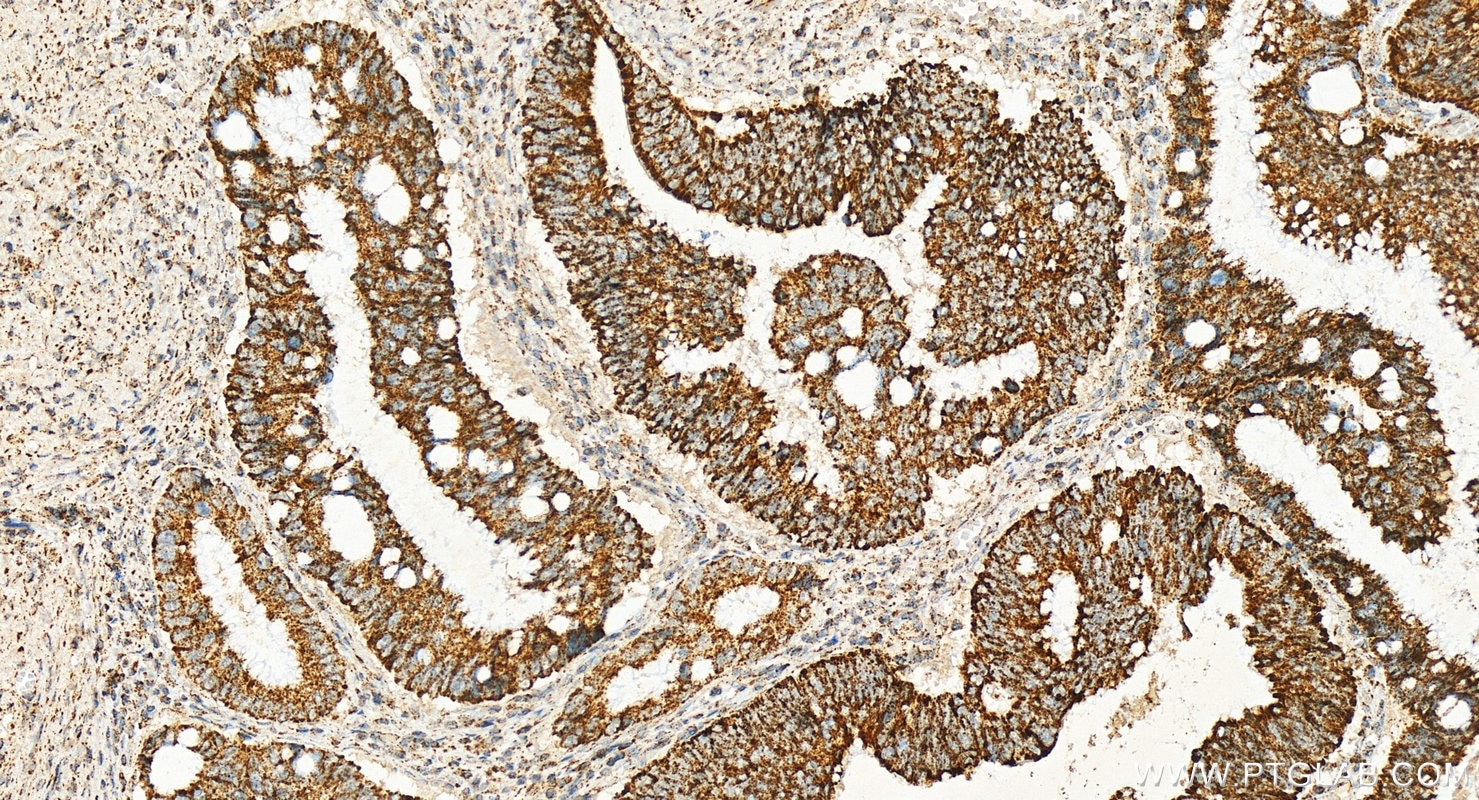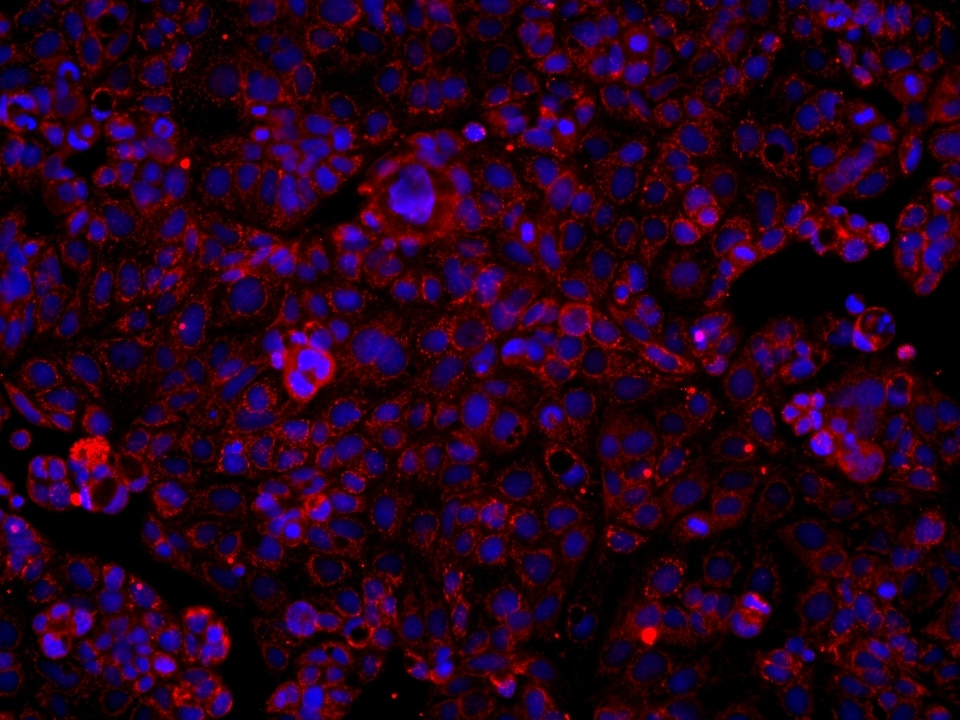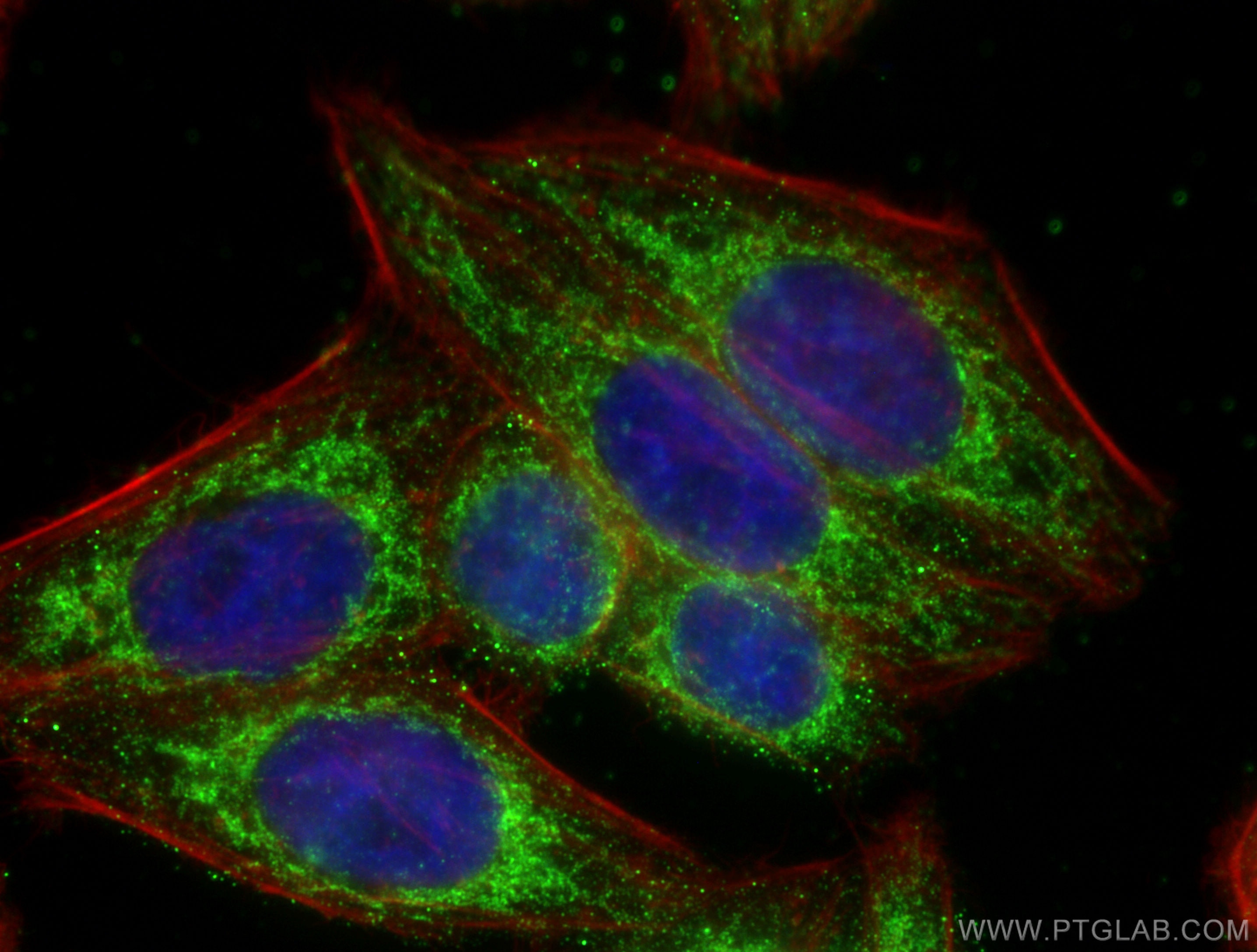SUCLA2 Monoklonaler Antikörper
SUCLA2 Monoklonal Antikörper für WB, IHC, IF/ICC, ELISA
Wirt / Isotyp
Maus / IgG2b
Getestete Reaktivität
human, Maus
Anwendung
WB, IHC, IF/ICC, ELISA
Konjugation
Unkonjugiert
CloneNo.
2C7E4
Kat-Nr. : 68549-1-Ig
Synonyme
Geprüfte Anwendungen
| Erfolgreiche Detektion in WB | HepG2-Zellen, HeLa-Zellen, Jurkat-Zellen, K-562-Zellen, LNCaP-Zellen, Maushirngewebe |
| Erfolgreiche Detektion in IHC | humanes Kolonkarzinomgewebe Hinweis: Antigendemaskierung mit TE-Puffer pH 9,0 empfohlen. (*) Wahlweise kann die Antigendemaskierung auch mit Citratpuffer pH 6,0 erfolgen. |
| Erfolgreiche Detektion in IF/ICC | Caco-2-Zellen, HepG2-Zellen |
Empfohlene Verdünnung
| Anwendung | Verdünnung |
|---|---|
| Western Blot (WB) | WB : 1:2000-1:16000 |
| Immunhistochemie (IHC) | IHC : 1:500-1:2000 |
| Immunfluoreszenz (IF)/ICC | IF/ICC : 1:500-1:2000 |
| It is recommended that this reagent should be titrated in each testing system to obtain optimal results. | |
| Sample-dependent, check data in validation data gallery | |
Produktinformation
68549-1-Ig bindet in WB, IHC, IF/ICC, ELISA SUCLA2 und zeigt Reaktivität mit human, Maus
| Getestete Reaktivität | human, Maus |
| Wirt / Isotyp | Maus / IgG2b |
| Klonalität | Monoklonal |
| Typ | Antikörper |
| Immunogen | SUCLA2 fusion protein Ag17967 |
| Vollständiger Name | succinate-CoA ligase, ADP-forming, beta subunit |
| Berechnetes Molekulargewicht | 463 aa, 50 kDa |
| Beobachtetes Molekulargewicht | 48-50 kDa |
| GenBank-Zugangsnummer | BC027587 |
| Gene symbol | SUCLA2 |
| Gene ID (NCBI) | 8803 |
| Konjugation | Unkonjugiert |
| Form | Liquid |
| Reinigungsmethode | Protein-A-Reinigung |
| Lagerungspuffer | PBS with 0.02% sodium azide and 50% glycerol |
| Lagerungsbedingungen | Bei -20°C lagern. Nach dem Versand ein Jahr lang stabil Aliquotieren ist bei -20oC Lagerung nicht notwendig. 20ul Größen enthalten 0,1% BSA. |
Hintergrundinformationen
SUCLA2, β subunit of succinate-CoA ligase, contributes to energy production in mitochondria through the succinate-CoA ligase enzyme. Succinate-CoA ligase catalyses the reversible conversion of succinyl-CoA and ADP or GDP to succinate and ATP or GTP. SUCLA2 mutations cause global protein succinylation and mitochondrial DNA depletion (PMID: 33230181, PMID: 20301762). Mutations in SUCLA2 are also associated with SUCLA2-related mitochondrial DNA depletion syndrome, leigh syndrome, down syndrome (PMID: 23010432).
Protokolle
| PRODUKTSPEZIFISCHE PROTOKOLLE | |
|---|---|
| WB protocol for SUCLA2 antibody 68549-1-Ig | Protokoll herunterladen |
| IHC protocol for SUCLA2 antibody 68549-1-Ig | Protokoll herunterladenl |
| IF protocol for SUCLA2 antibody 68549-1-Ig | Protokoll herunterladen |
| STANDARD-PROTOKOLLE | |
|---|---|
| Klicken Sie hier, um unsere Standardprotokolle anzuzeigen |
